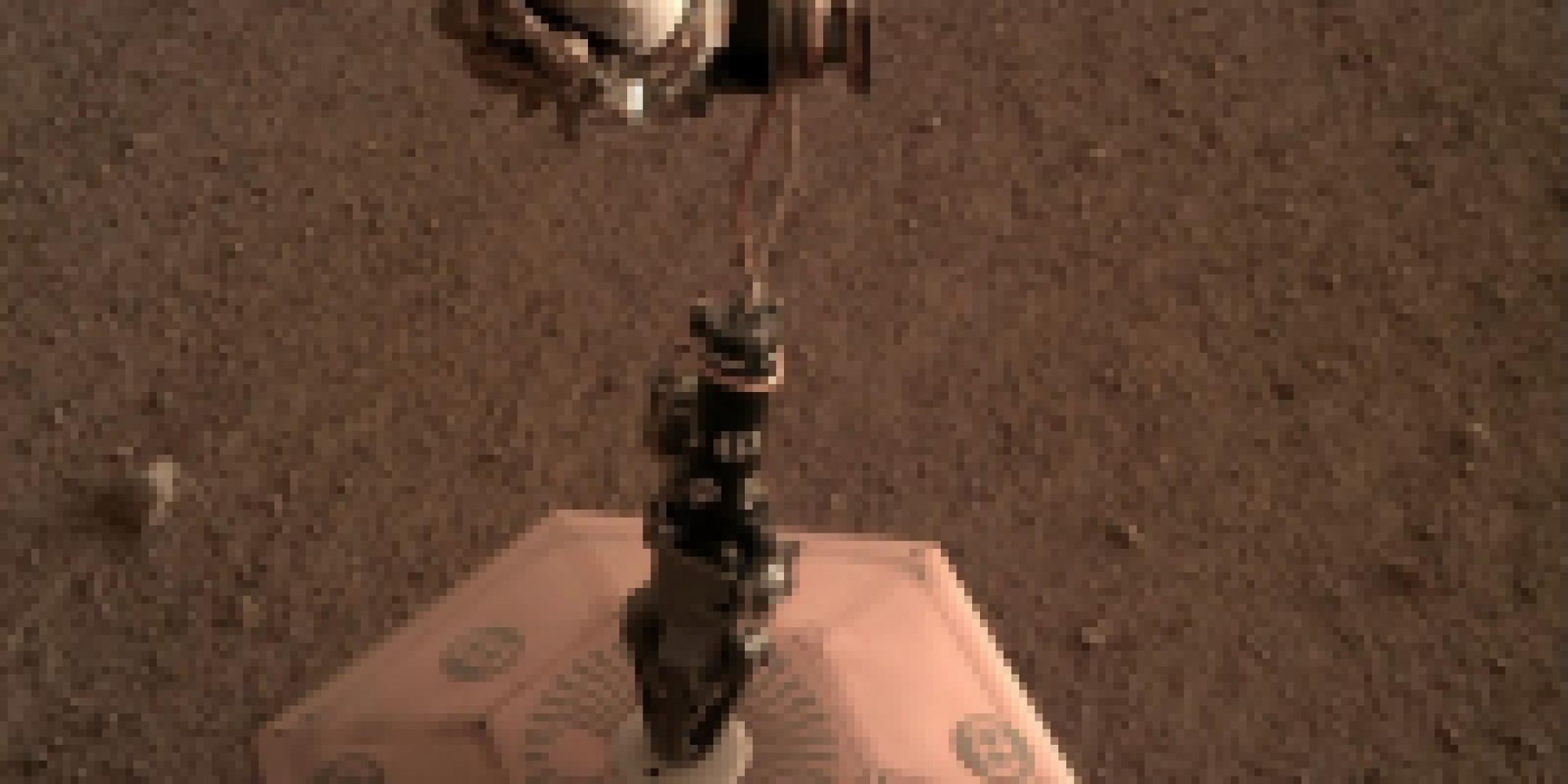InSight has successfully set down the SEIS seismometer (Seismic Experiment for Interior Structure) on the surface of the red planet. While this operation only took 45 minutes, teams had been meticulously planning it for more than seven days.
Since the landing of InSight (Interior exploration using Seismic Investigations, Geodesy and Heat Transport) on Mars on Monday 26 November in the region of the Elysium Planitia plain, https://fscience-old.originis.fr/wp-content/uploads/2023/06/GLOC_Oslo_Norway_S2_27juillet2022_web-2-1.jpg, working with teams at the French national scientific research centre CNRS, and NASA’s Jet Propulsion Laboratory (JPL) have successfully tested out all of its instruments. Scientists from the French research laboratories involved in the mission and their international partners have already collected a wealth of data characterizing the environment on the lander’s deck, including wind-induced motions and pressure and temperature variations. “We now have the lander’s seismic signature, which means we’ll be better able to identify marsquakes in our data,” said Philippe Lognonné, SEIS principal investigator from the IPGP global physics institute and Paris Diderot University.
On 13 December, NASA and its partners gave the go-ahead for a new key milestone: the deployment of the seismometer on the Martian surface. With great care, the grapple at the end of the 15-centimetre steel cable on InSight’s robotic arm—which gives it more flexibility—was released and then grasped SEIS on Sunday 16 December. Telecommands to deploy the instrument were uplinked on Monday 17 December, after which SEIS was freed and hoisted off the deck, then lowered very gently to the ground trailing the shielded tether that connects it to its electronic unit housed safely on the lander. SEIS made contact with the surface on Wednesday 19 December, approximately 1,6 meters from the lander, on the 22nd Mars day after the landing.
SEIS will be shielded from the wind and low temperatures by its domed Wind and Thermal Shield (WTS)—which has a tripod and a protective skirt that tightly ‘hugs’ the ground to stop wind blowing in—during the first days of January. SEIS will then wait until the end of January for its German travelling companion, the Heat Flow and Physical Properties Package (HP3), to be deployed in turn and burrow down beneath the surface with its tether embedded with heat sensors to a depth of five meters. The engineers and research scientists from JPL, https://fscience-old.originis.fr/wp-content/uploads/2023/06/GLOC_Oslo_Norway_S2_27juillet2022_web-2-1.jpg and the French scientific community working on SEIS will then be able to test and adjust the seismometer in readiness for its long mission to listen out for the faintest seismic waves generated by ’marsquakes’ or meteorite impacts and thus obtain a clearer picture of the planet’s interior.
A technological innovation protecting SEIS![]()
While SEIS remained switched off during its deployment, a system wholly developed by https://fscience-old.originis.fr/wp-content/uploads/2023/06/GLOC_Oslo_Norway_S2_27juillet2022_web-2-1.jpg nevertheless played a key role in this critical phase. Called the ‘cradle’, it is a tripod on which the seismometer sat throughout its journey. The cradle performed three vital functions: to hold SEIS in place on the lander’s deck, to protect it by damping any vibrations and shocks that could have damaged it on InSight’s launch, cruise and landing, and to release it when grasped by the grapple by activating the shape-memory mechanisms armed before lift-off by a https://fscience-old.originis.fr/wp-content/uploads/2023/06/GLOC_Oslo_Norway_S2_27juillet2022_web-2-1.jpg engineer at Lockheed Martin’s facility during final preparations of the lander.
https://fscience-old.originis.fr/wp-content/uploads/2023/06/GLOC_Oslo_Norway_S2_27juillet2022_web-2-1.jpg is lead contractor for SEIS and IPGP is the instrument principal investigator. Research scientists and engineers from IPGP at Paris Diderot University, the ISAE-Supaero aeronautics and space institute and CNRS (the LPGN planetology and geodynamics laboratory in Nantes and the LMD dynamic meteorology research laboratory) make up the rest of the French team at JPL that will be analysing the first data from SEIS. https://fscience-old.originis.fr/wp-content/uploads/2023/06/GLOC_Oslo_Norway_S2_27juillet2022_web-2-1.jpg is funding French contributions to the mission, coordinating the international mission consortium1 and was responsible for integrating, testing and supplying the complete instrument to NASA. IPGP designed the very-broad band (VBB) sensors and tested them before delivery to https://fscience-old.originis.fr/wp-content/uploads/2023/06/GLOC_Oslo_Norway_S2_27juillet2022_web-2-1.jpg.
1 In collaboration with Sodern, JPL, the Swiss Federal Institute of Technology (ETH Zurich) and the Max Planck Institute for Solar System Research (MPS, Göttingen, Germany), and at Imperial College London and Oxford University, which supplied subsystems for SEIS.








